In the heart of the culture district in Detroit, Michigan is the Charles H. Wright Museum of African American History, also known as The Wright or The Wright Museum.
Dr. Wright was a pillar of the community and after a visit to Denmark felt there needed to be a collection for African American history and culture. Today, his dream has grown into a state of the art museum with excellent permanent exhibits and rotating exhibits that tell the story of black history.
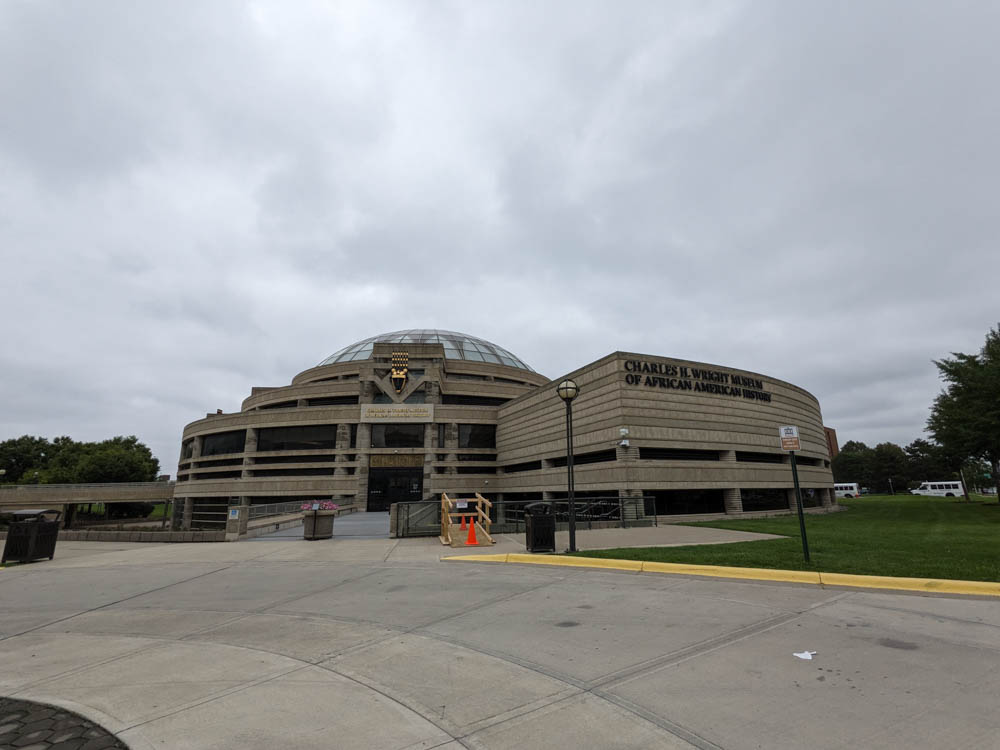
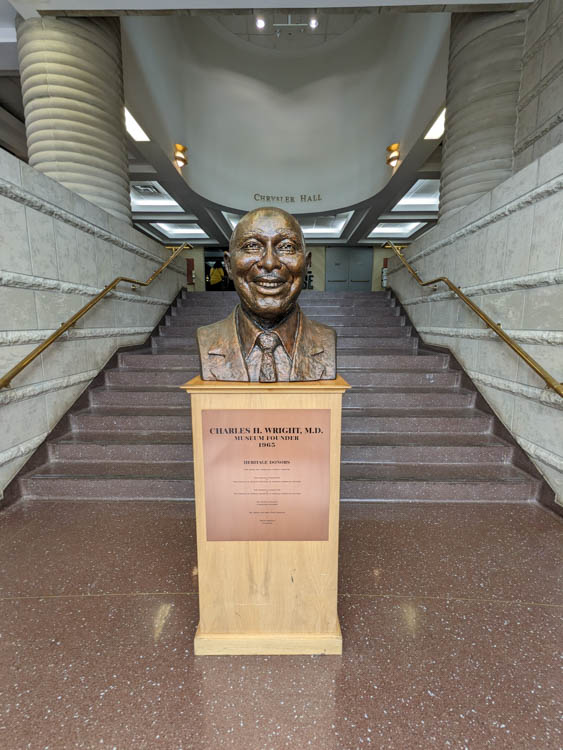
The main permanent exhibit is “And Still We Rise” which covers black history from its foundations in Africa through to today. This exhibit is comprehensive and has a lot of excellent artifacts and life-sized examples of historic people and places.
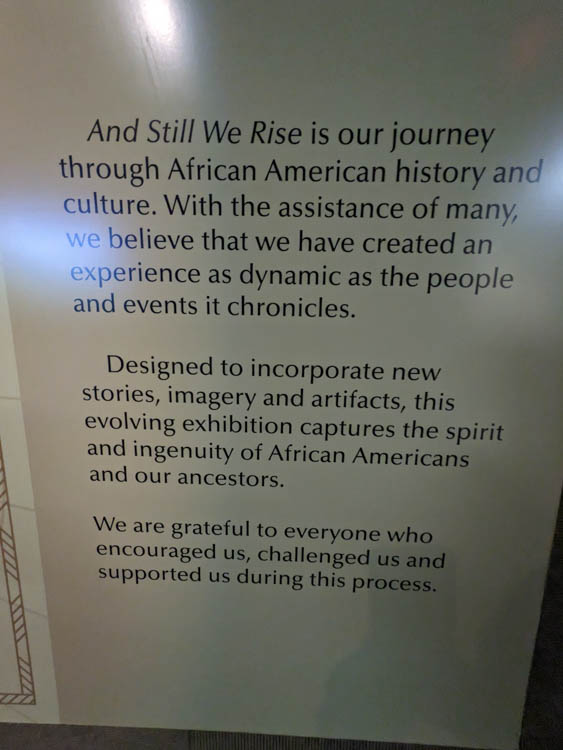
The exhibit starts with a display about the “mitochondrial mother” of all mankind, the genetic “Eve” if you will. This theory traces the roots of humanity to one mother about 120,000 years ago. There is more to this theory than I can put here, especially as this is not about genetics, but if you’re interested in more on this scientific theory you can start here. It’s not that mankind didn’t come from Africa, there’s just more nuance to the story and information. This was one of my first times seeing any real information about this though, so I found it very interesting.
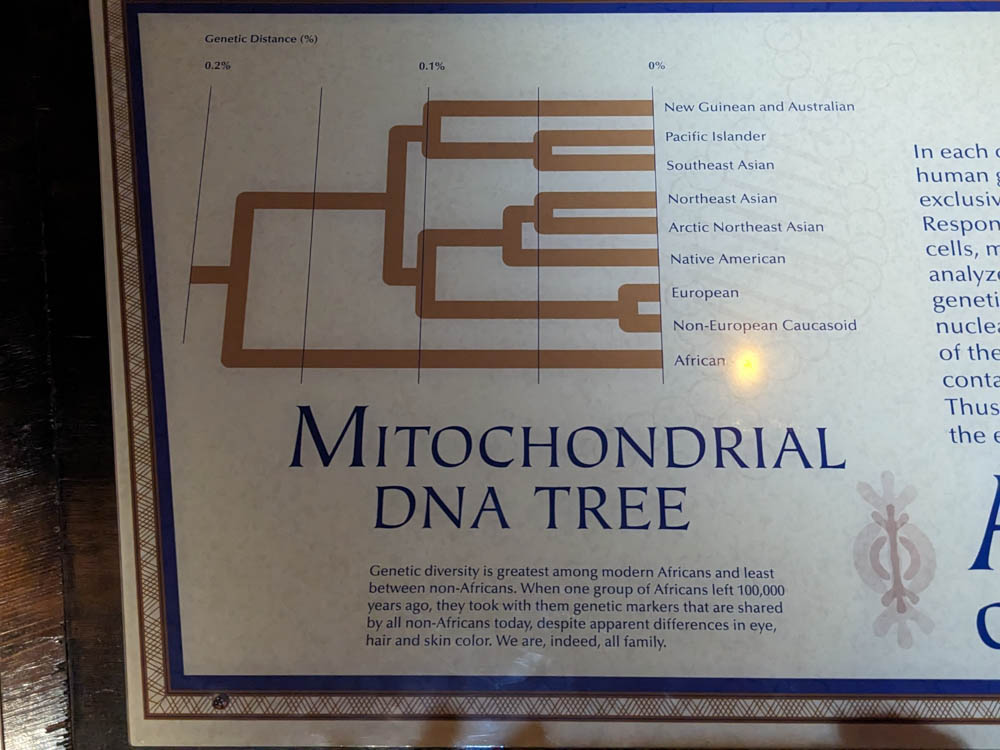
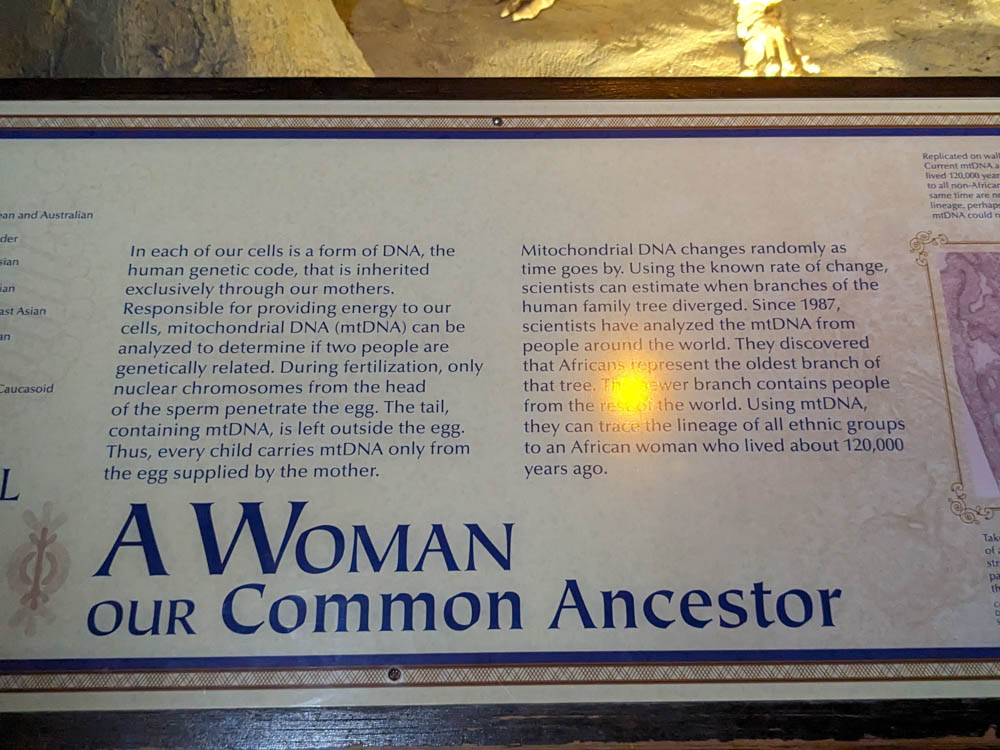
You can follow the timeline of time through the museum. It highlights what’s happening at different points in history in Detroit, Africa and the World.
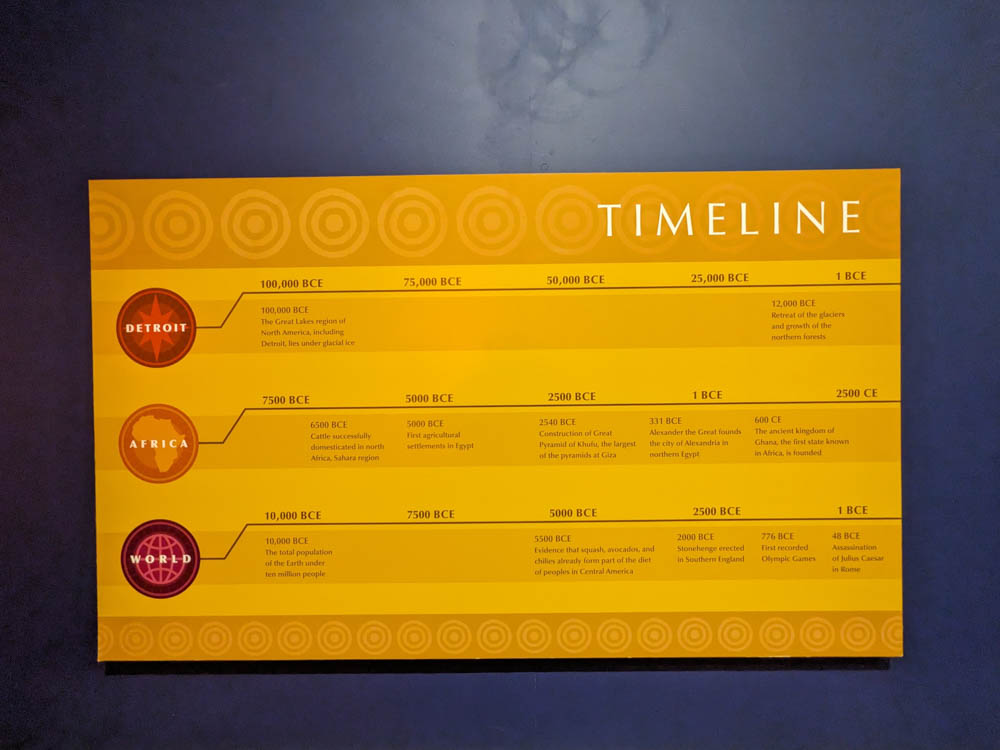
As you walk through into a historic market in Benin, you’re surrounded by the sights and sounds of a busy African market. The models are rich in detail and rival any other museum I’ve been to, except for maybe the newest works at the Blacks in Wax Museum, for their attention to detail.
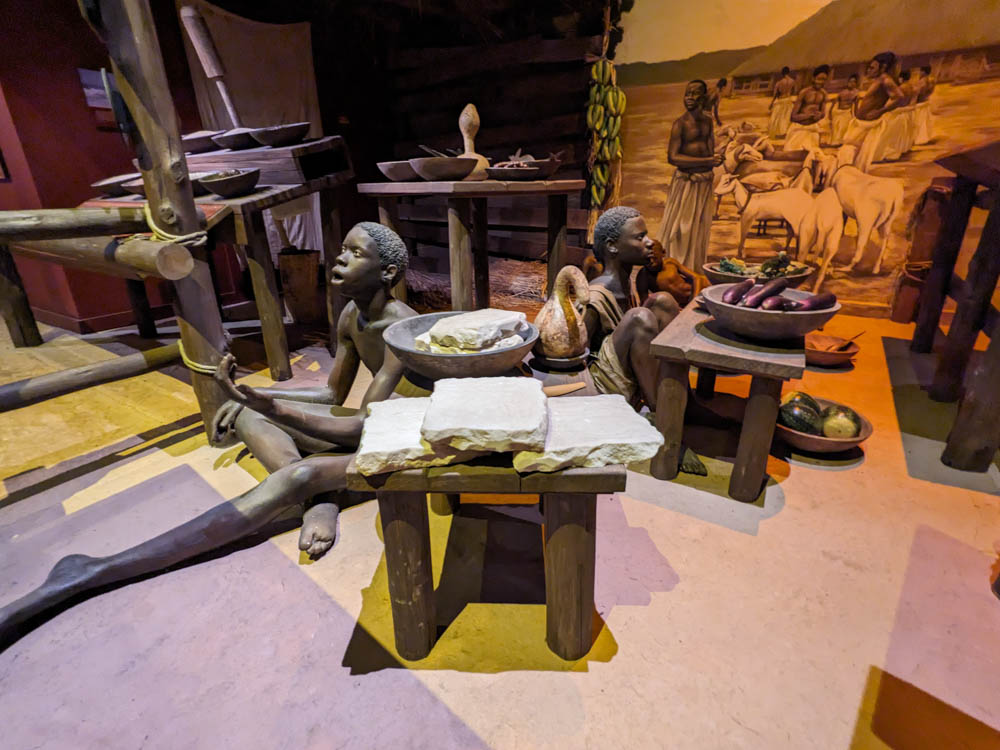
Seeing this game, and its instructions, was a real treat. We learned this game in Rwanda in 2008 and have a board ourselves in storage (almost everything we own is in our car for our 50 state road trip, but we have a small storage closet with keepsakes) that now we can break back out and play when the road trip is over.
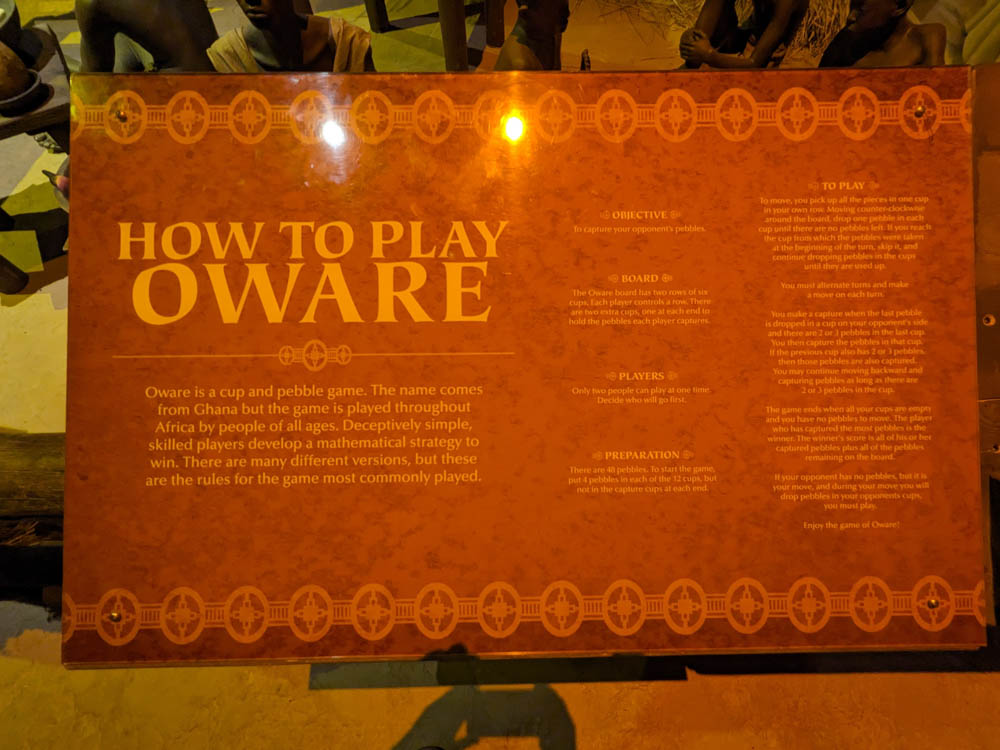
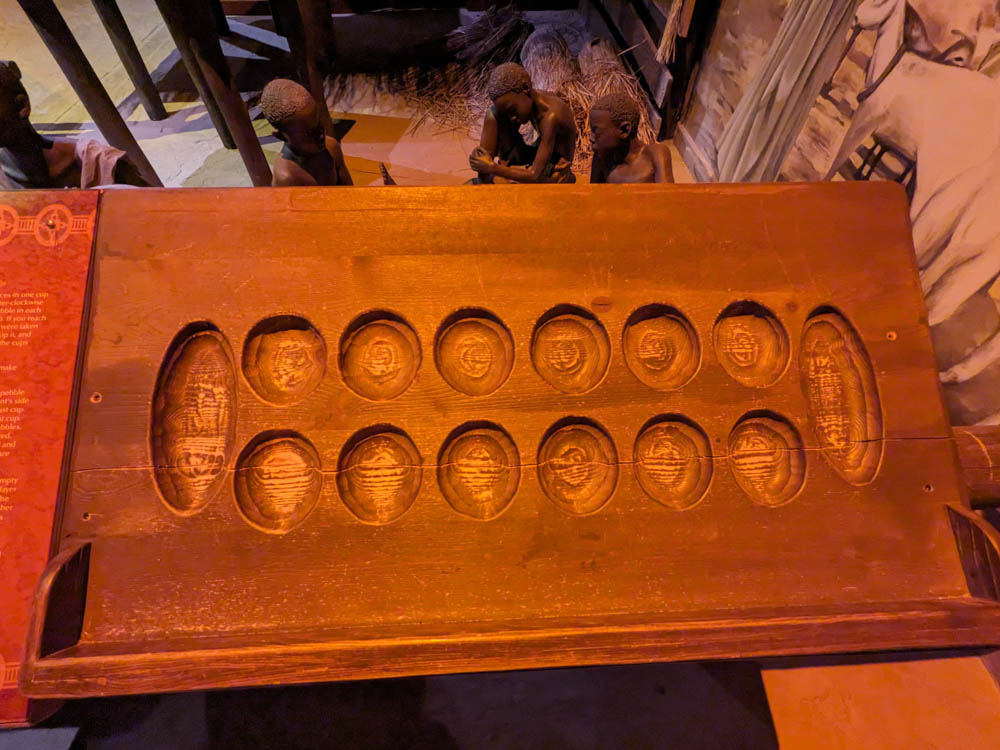

Once you leave the bustling market of Benin you begin the heartbreaking journey through exhibits about the horrors of transatlantic enslavement. Each exhibit is well crafted, has sound to accompany it and a storyline you can follow throughout.
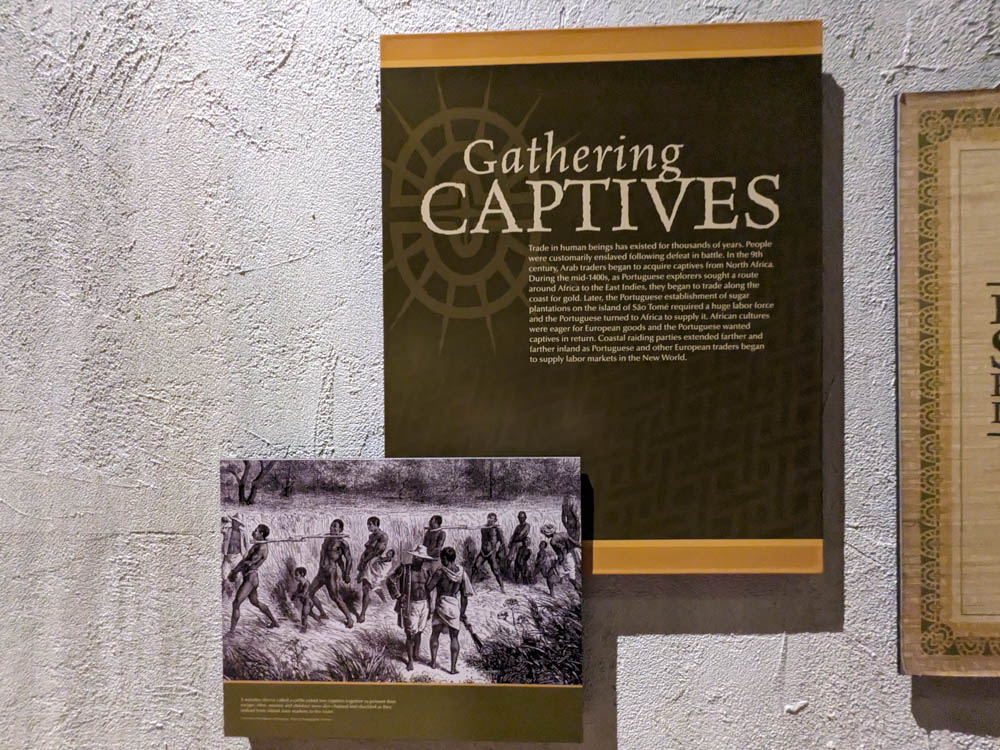
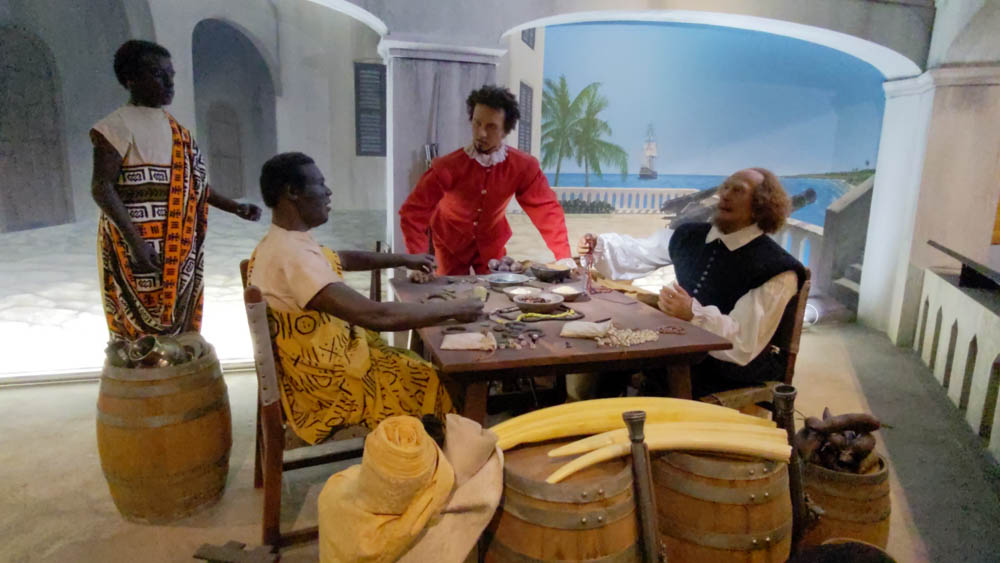
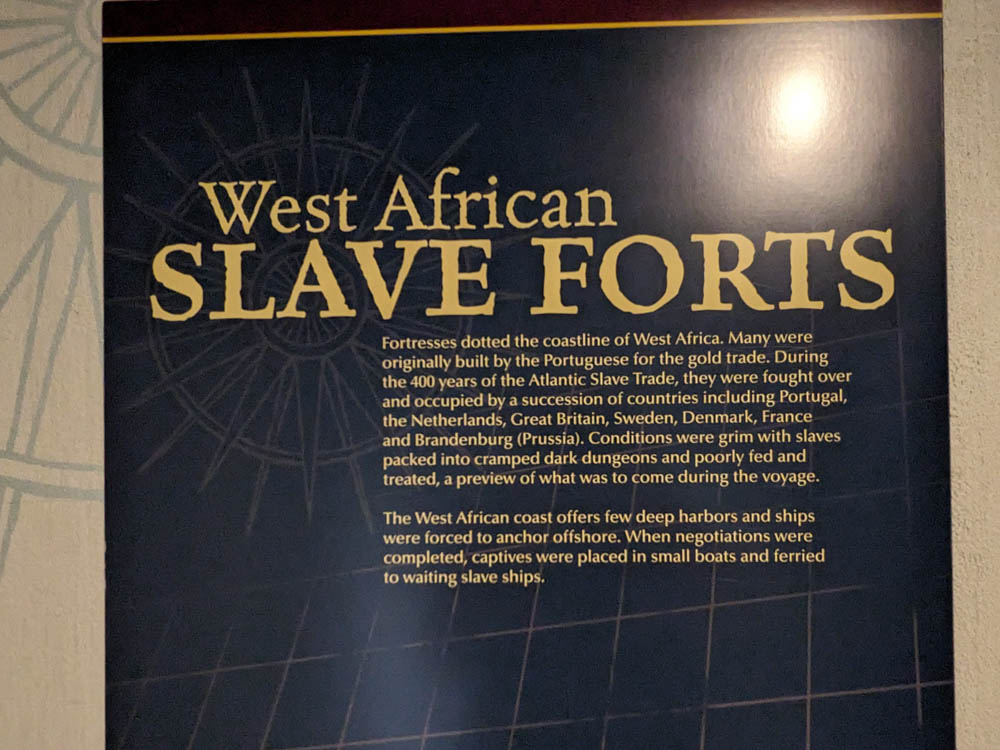
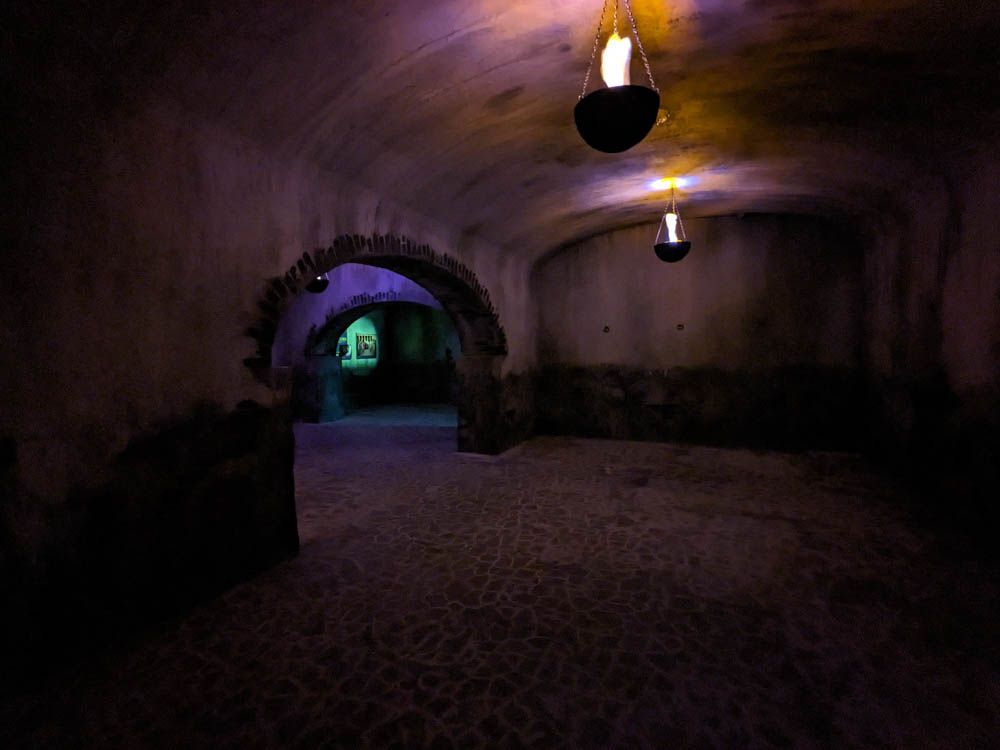

When you head down into the cargo hold you’re in a dim area, much more so than this image conveys (thanks to night sight technology on our phones) and you can hear the cries and wails of the men and women below decks and the sound of chains (plus the sounds from the deck above like branding) as you move through the journey exhibit about the Middle Passage.
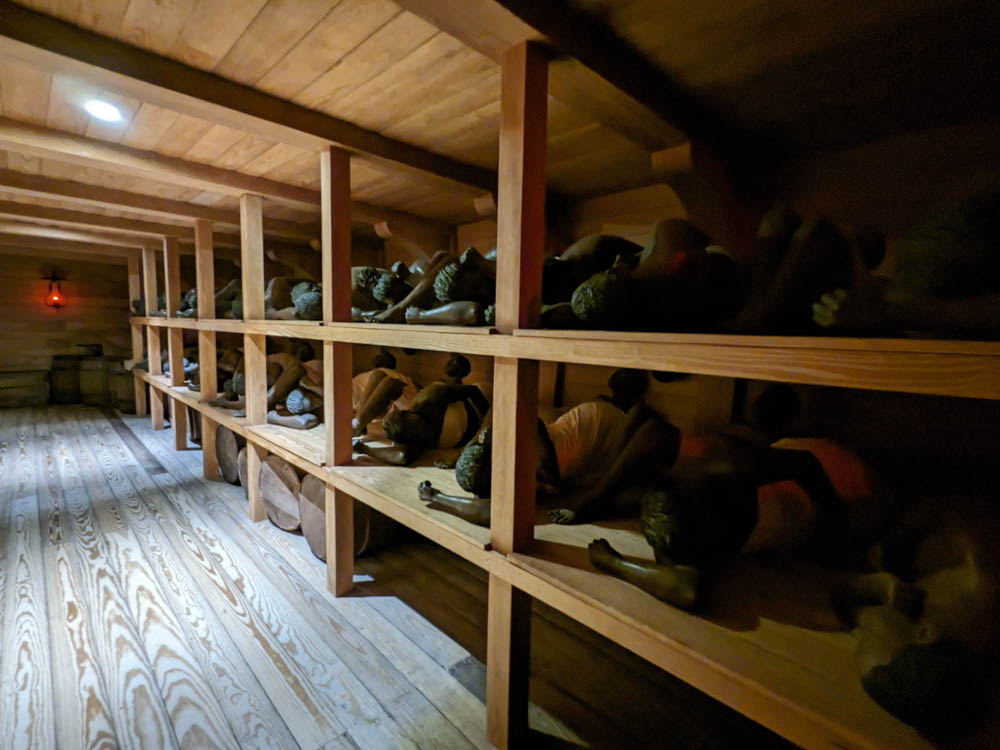
You emerge from the ship into a street where an auction of enslaved people is happening. You can hear questions from the audience and you hear a free man try to buy his family and the trouble that stirs up.

You move through times in these exhibits past enslavement and the Civil War to learn about The Great Migration and why many black men and women made their way to Detroit – the Motor City – eventually creating a place for music known as MoTown. The Great Migration is a period of time when black men, women and families left the Jim Crow south to head north in the hopes that they would be able to have a better lives for themselves and their families in relative safety.
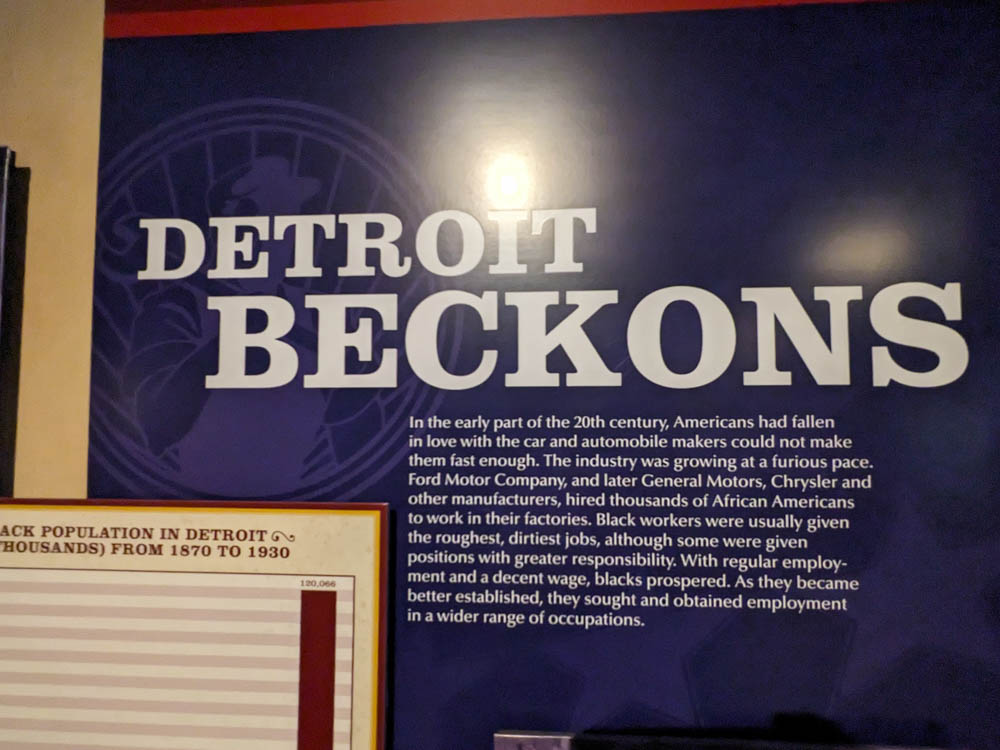
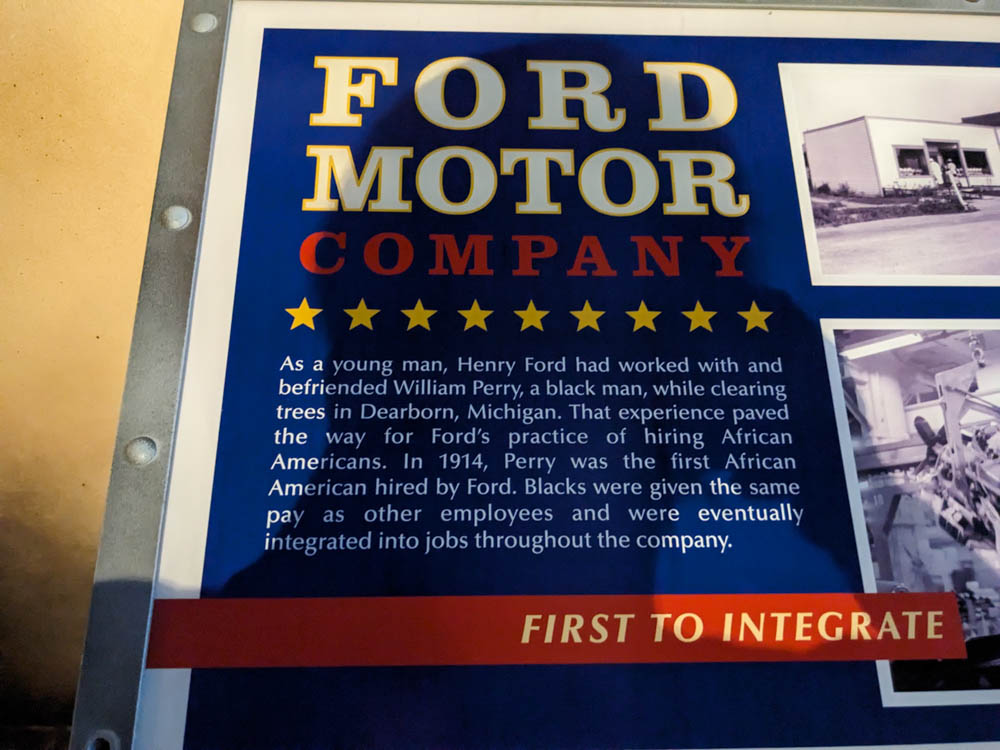
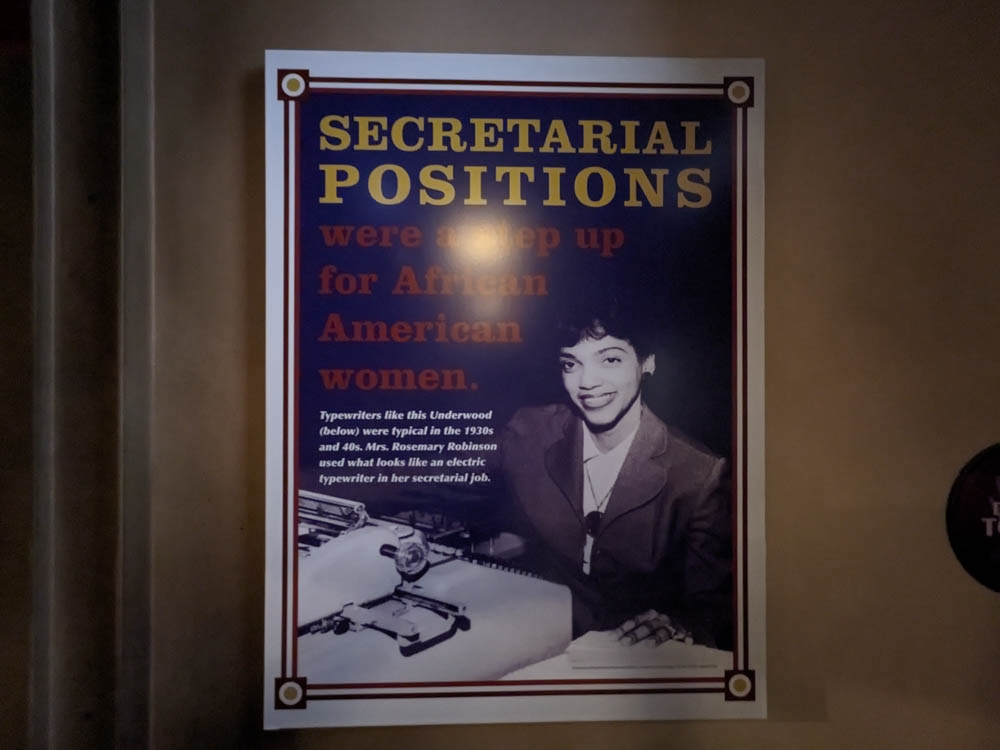
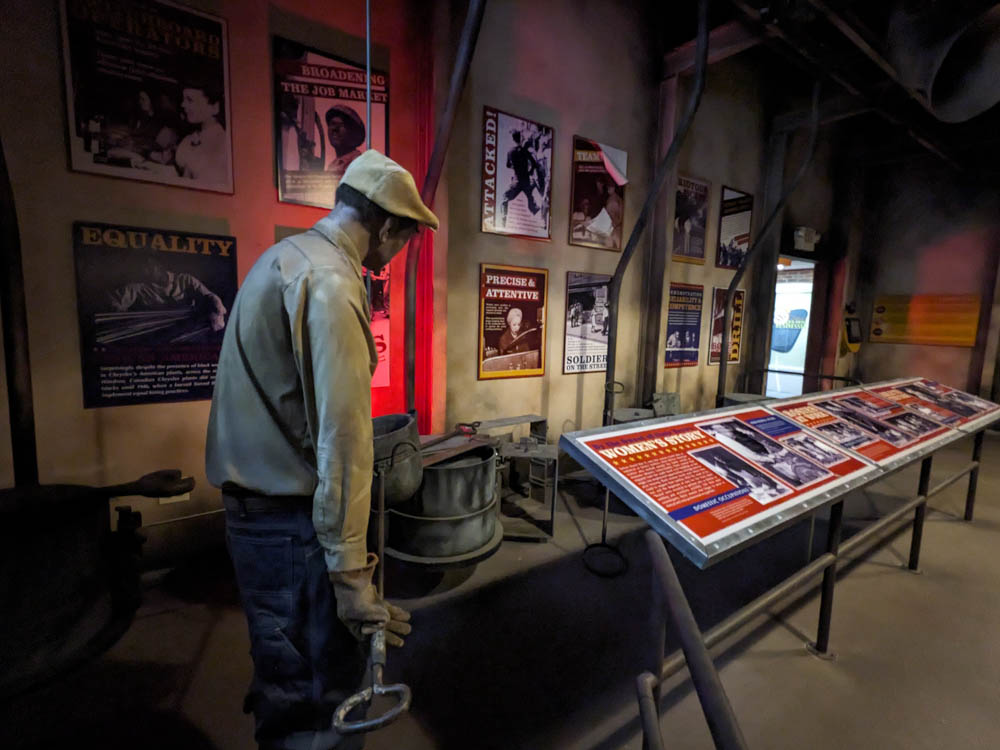
As a result of the Great Migration, there were a lot of black neighborhoods, communities and high streets that catered to black needs and the black community specifically. They were being segregated across the country and this provided a way for black-owned businesses to supply the needs of black customers. You walk through into building after building in this exhibit to see a bar, theater, barber shop, church and more.
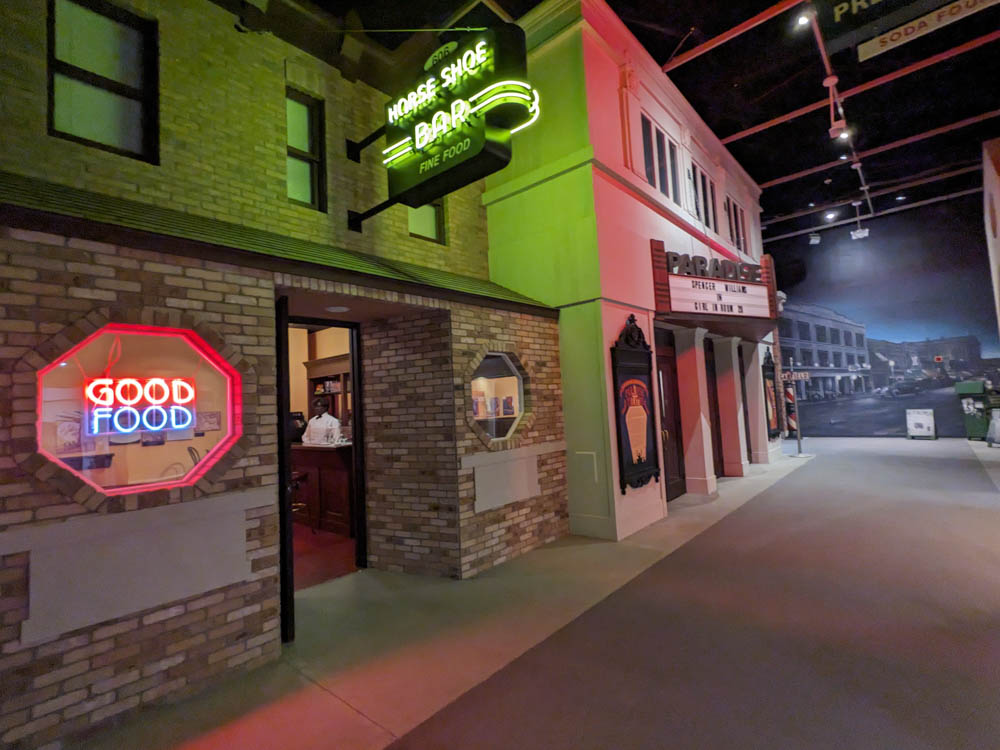
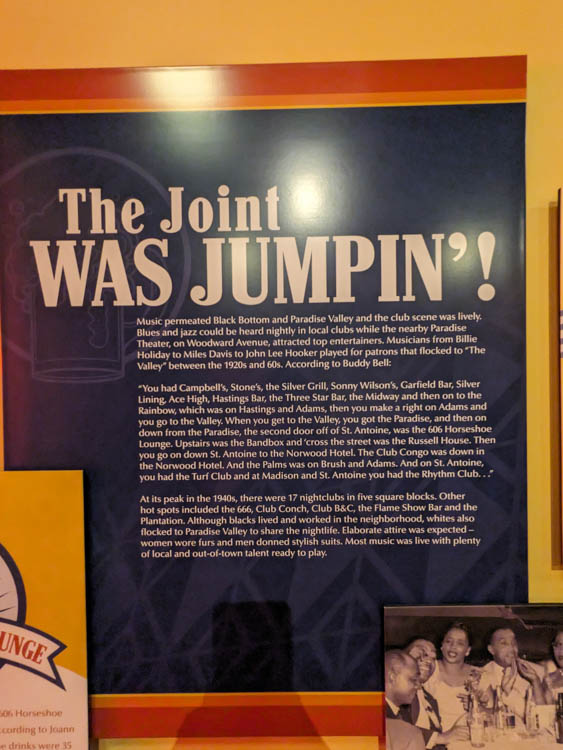
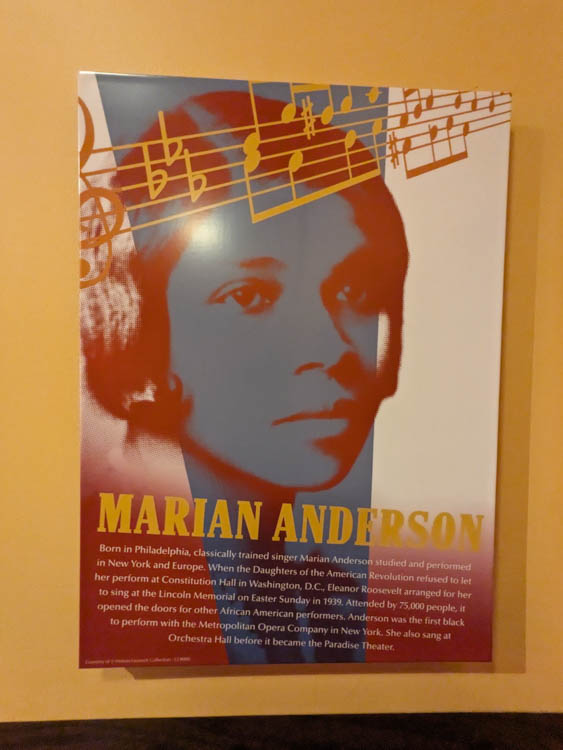
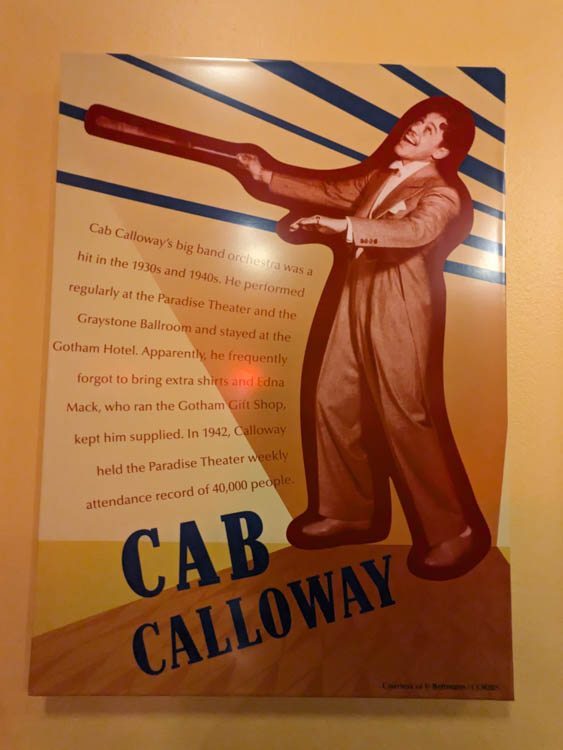
When I visited in July 2023 there were temporary exhibits by black artists to appreciate.
The first was Mapping the Michigan Green Book which showed towns and locations where black travelers on vacation could stop and stay. If you’re not familiar with what the Green Book was, it was a book – specifically for black motorists and travelers – that showed which safe locations they could stay at during segregation.
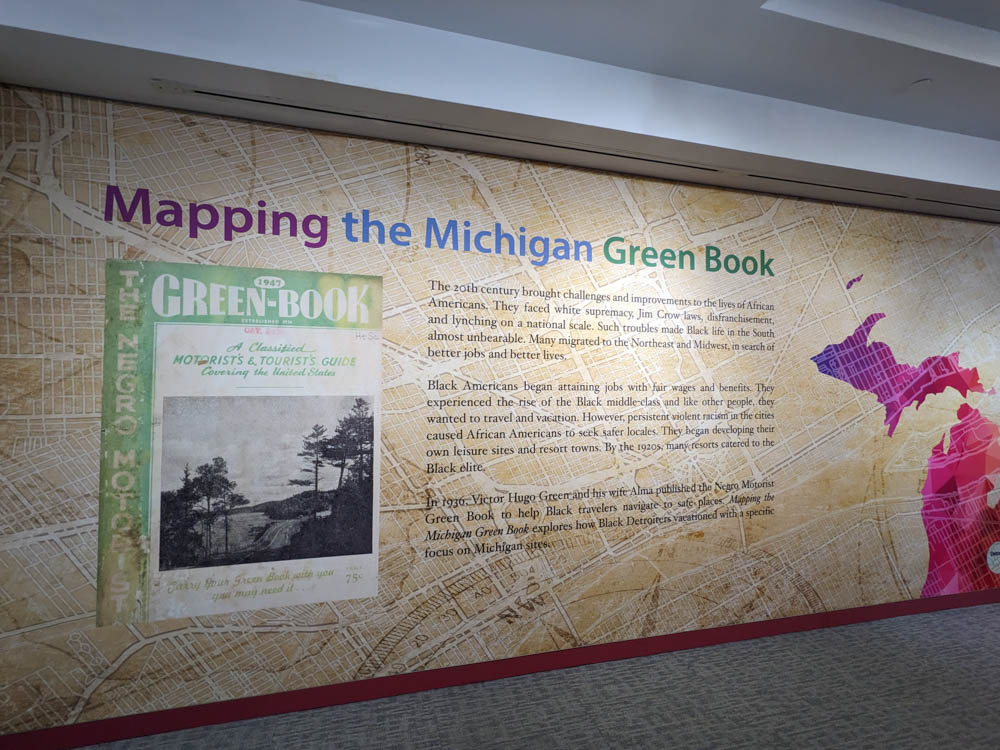
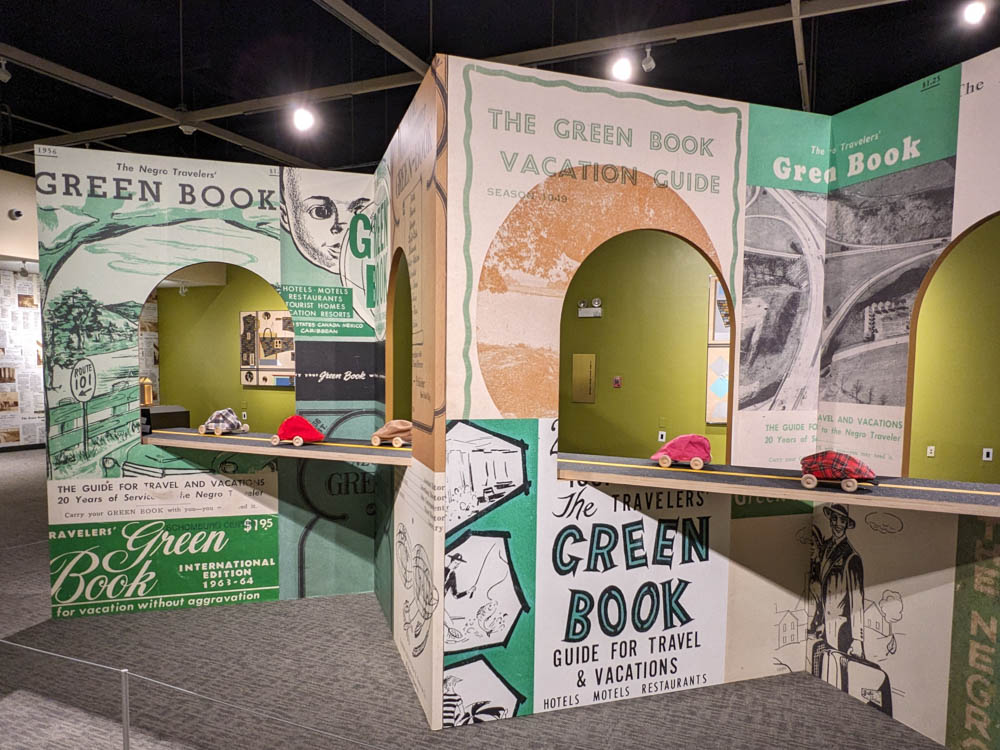
There was an exhibit on the Tuskegee Airmen and their important contributions to World War II and beyond.
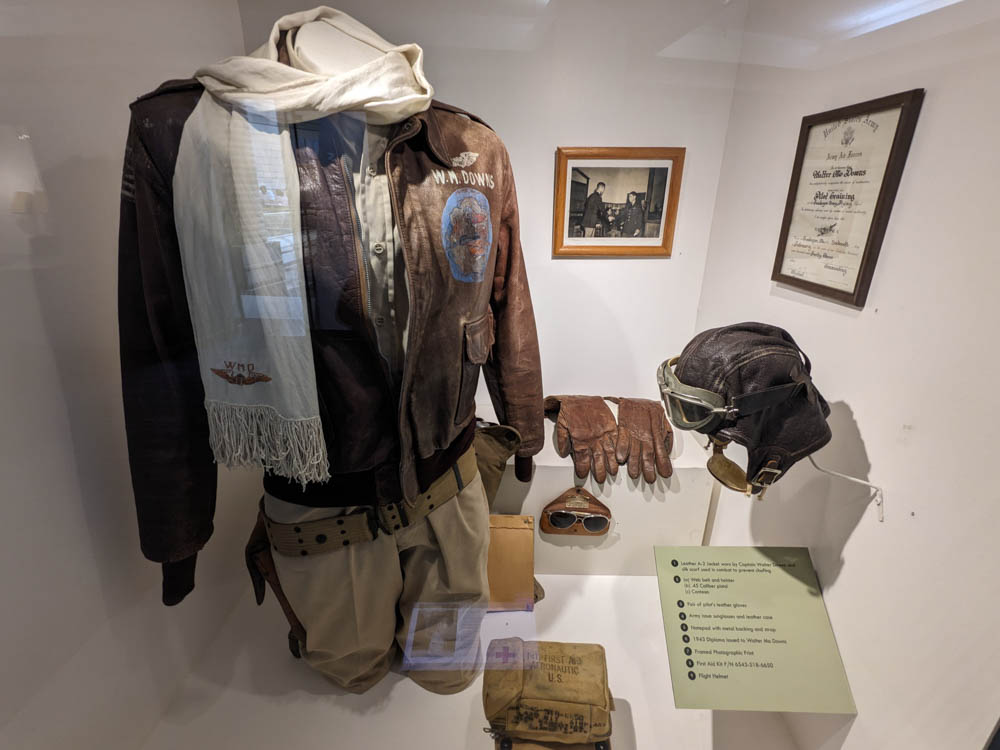
This is a view of the glass dome that covers the rotunda to The Wright and the area called the Ring of Genealogy – a permanent mural in the floor by Hubert Massey.

This temporary exhibit is called Being Seen and featured four Detroit-based artists, Joyce Jeffrey, Tia Nichols, April Anue Shipp, and Cara Marie Young.
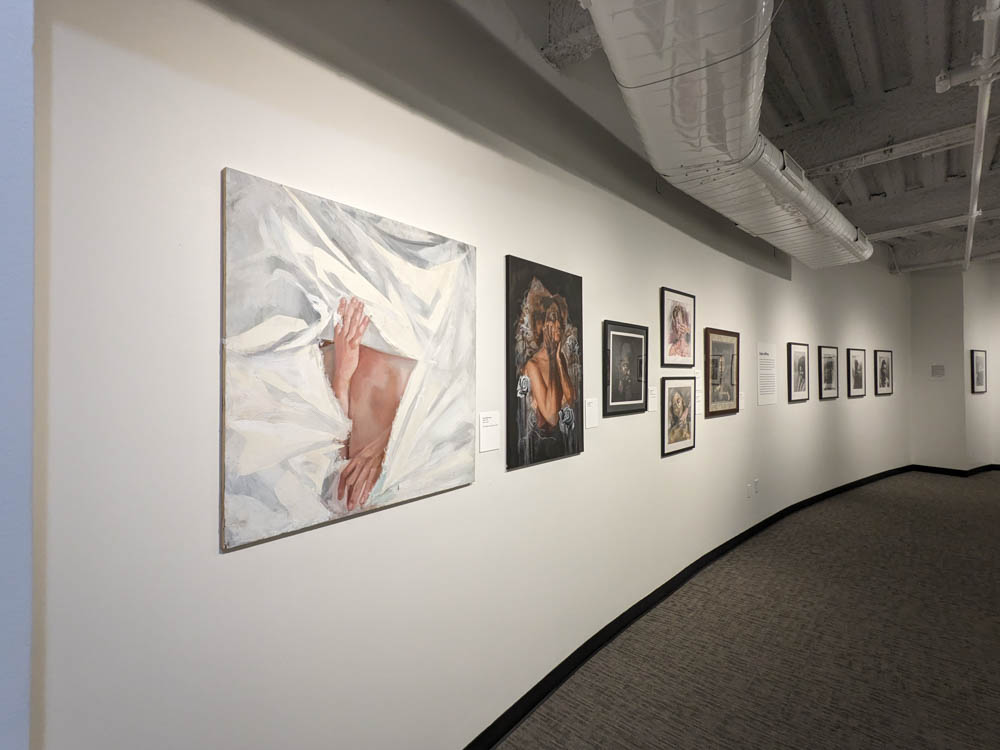
The final temporary exhibit I saw was D. Tree Studio: The Past, Present, and Future of Detroit Trees which is a collaboration with the College for Creative Studies.
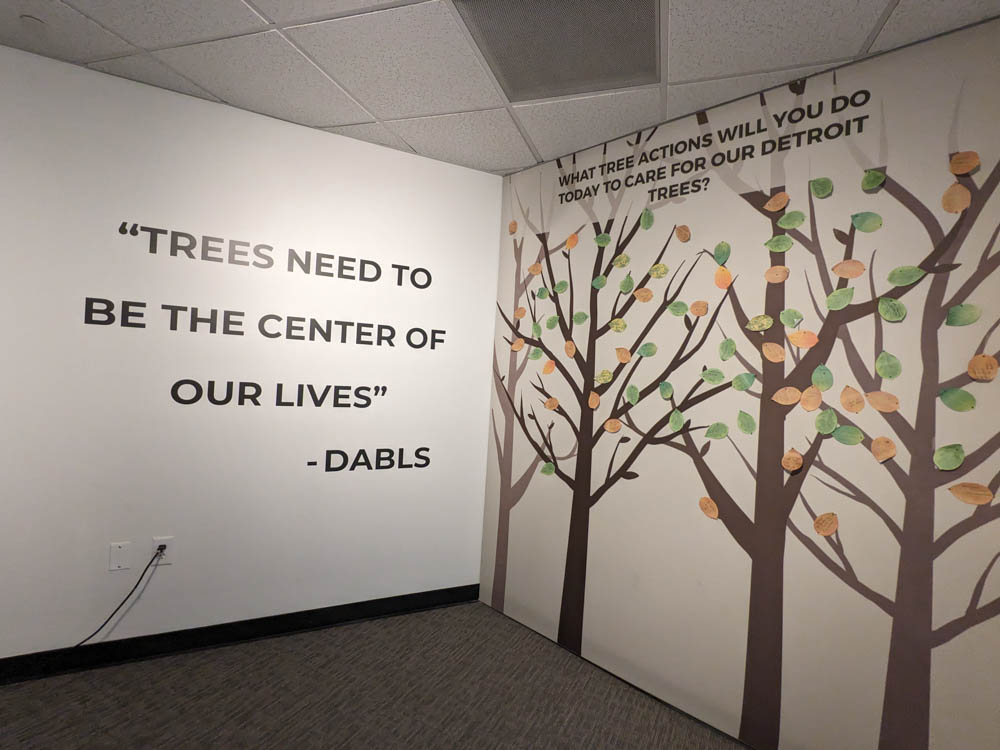
There’s an excellent gift shop with lots of great options to commemorate your day at the Charles H. Wright Museum of African American History. I spent around four hours at the museum and still didn’t see everything it had to offer. Conveniently located near other museums, it’s a great place to learn more about black history in Detroit and beyond.
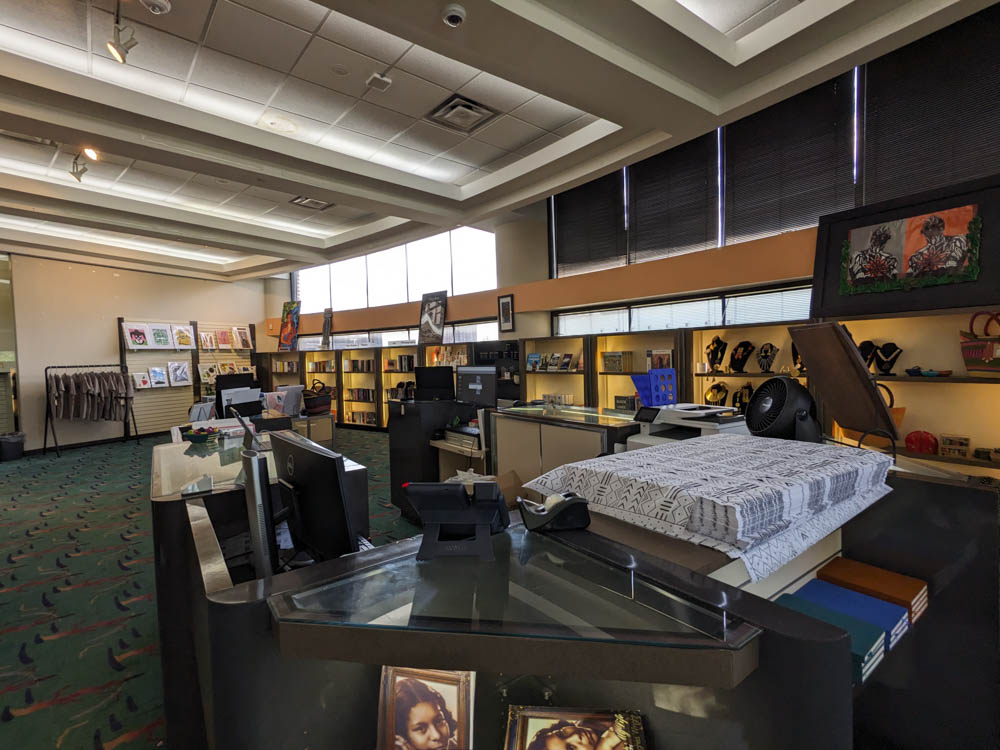
[…] I was working one day Shae went to the Charles H. Wright Museum of African American History. Read her full post about it here, but here’s a quick summary of her […]